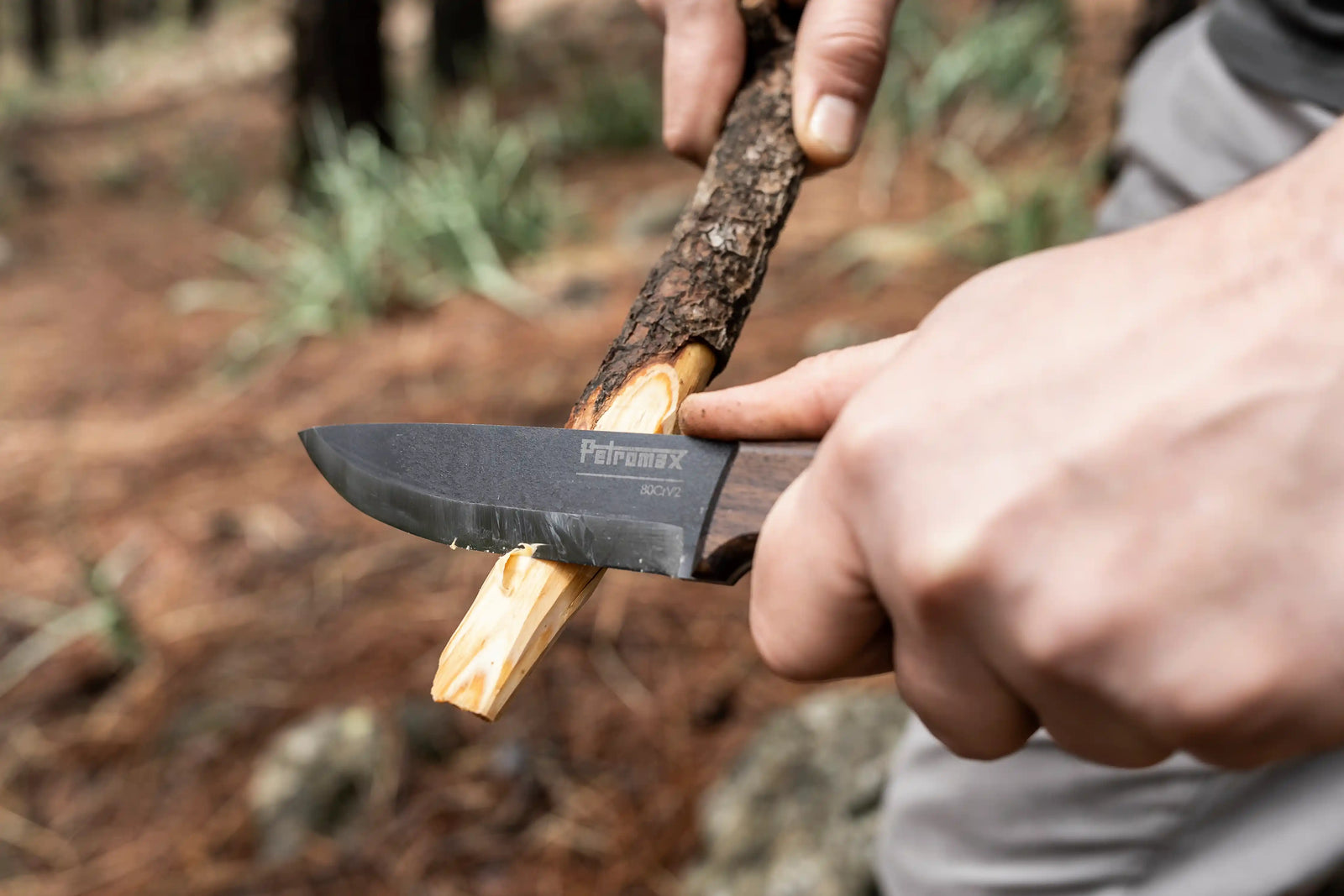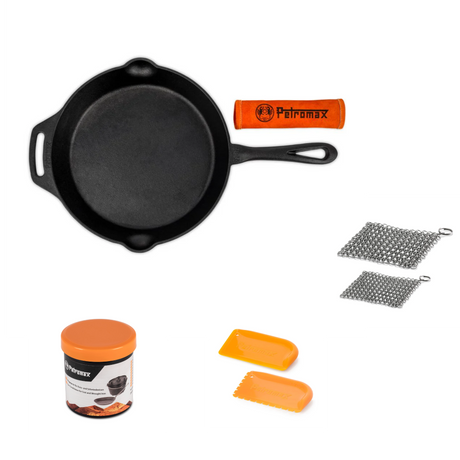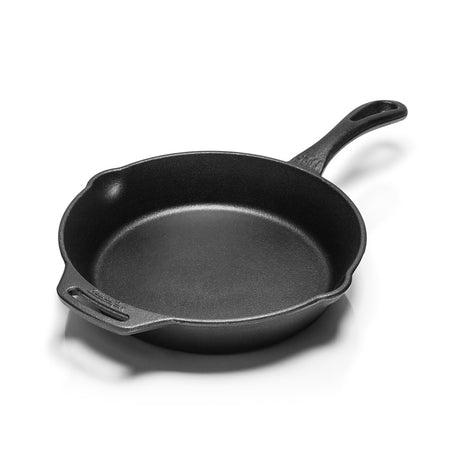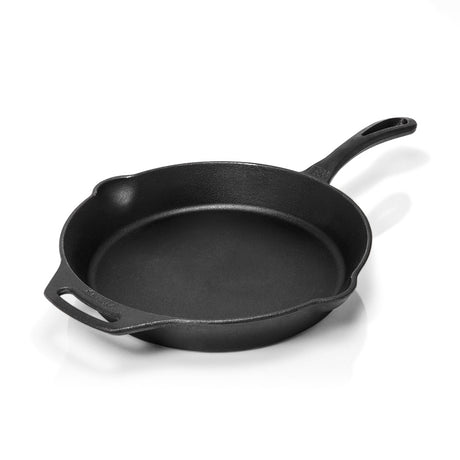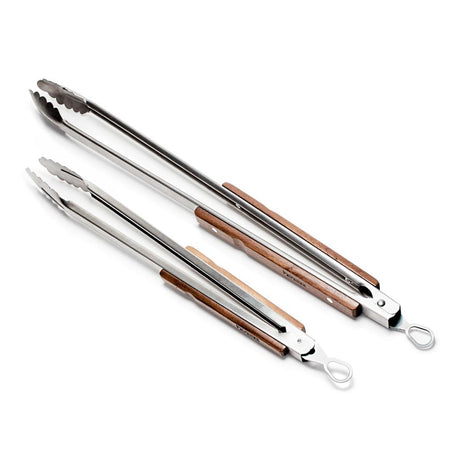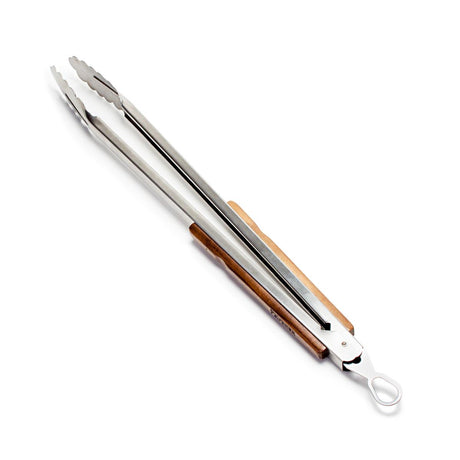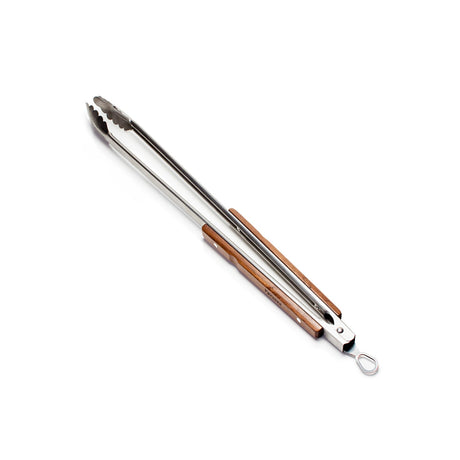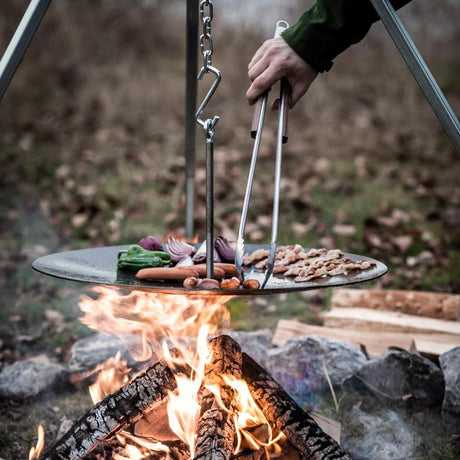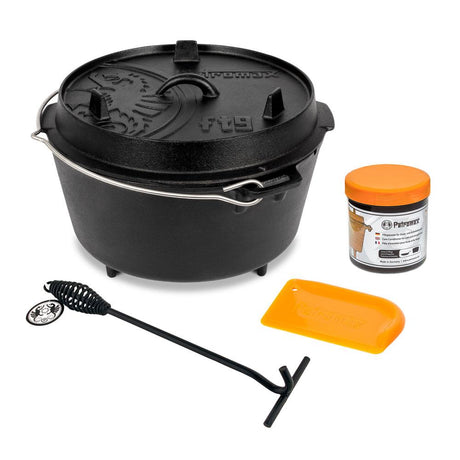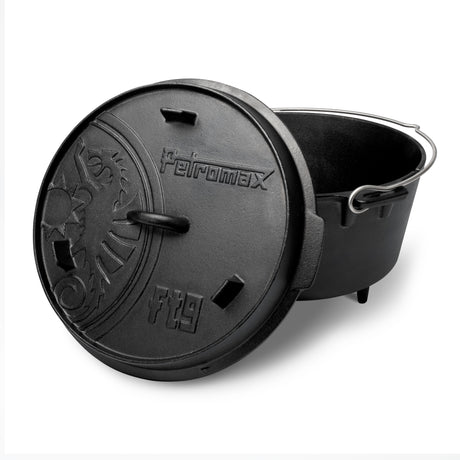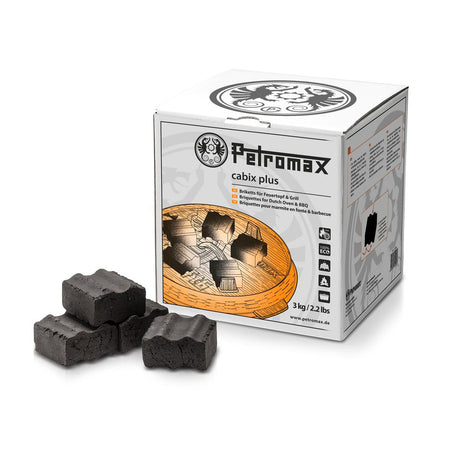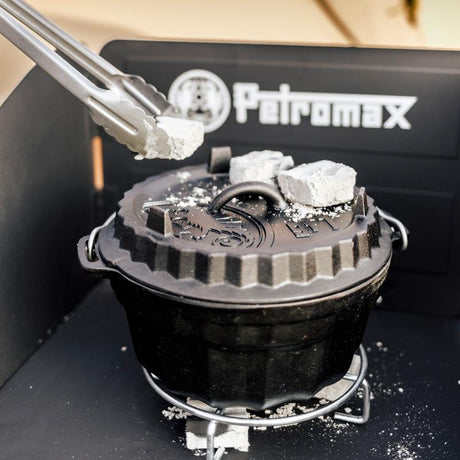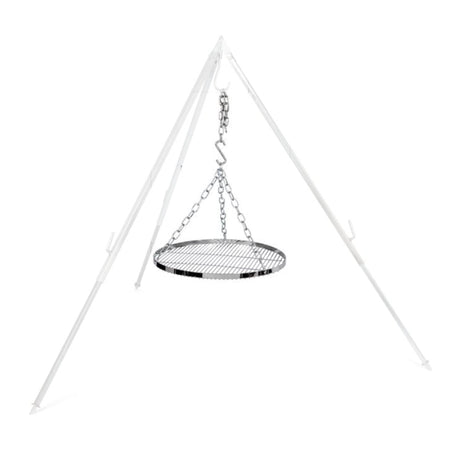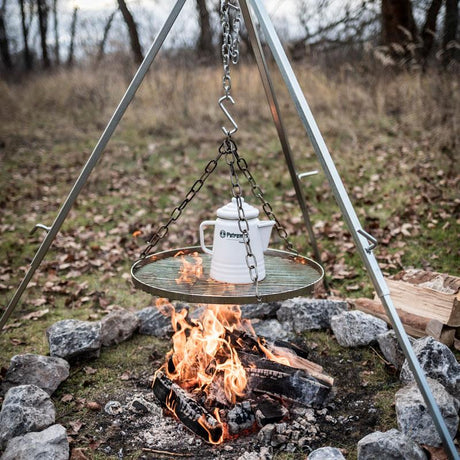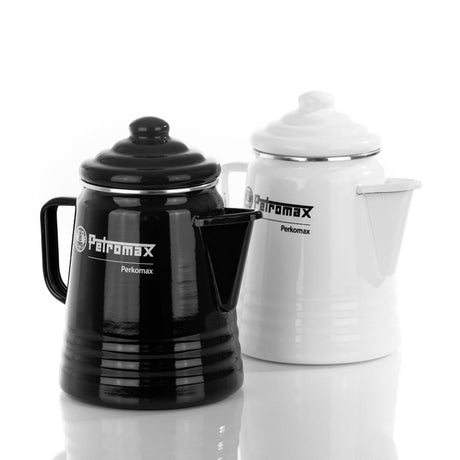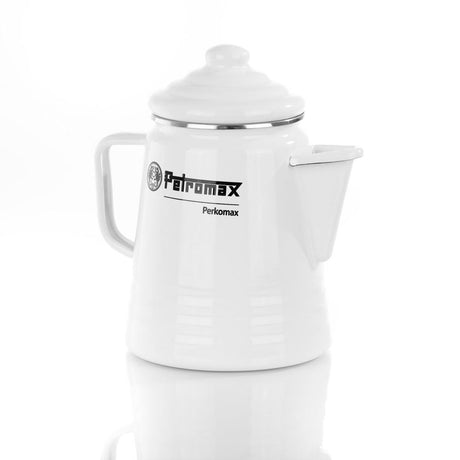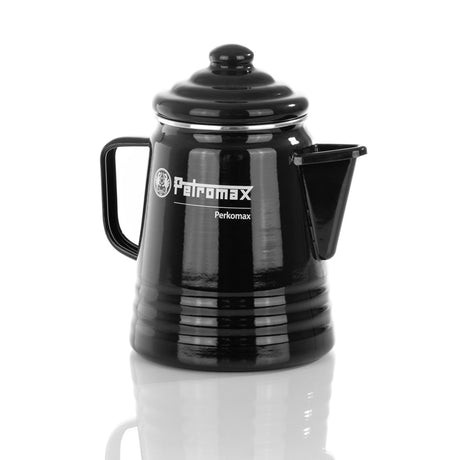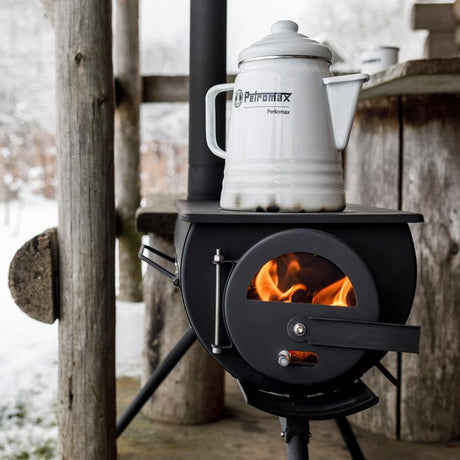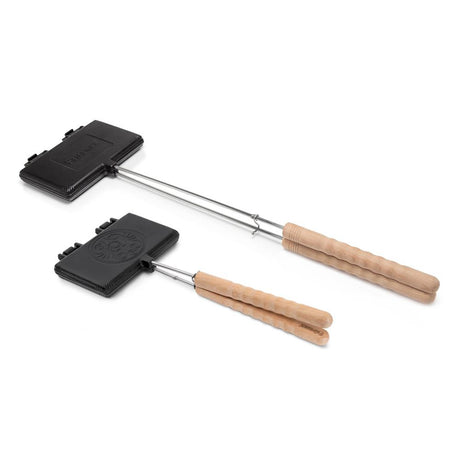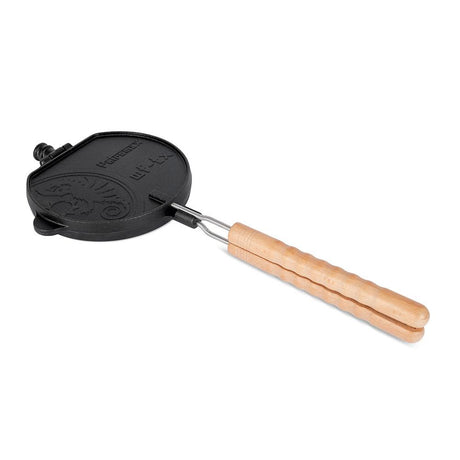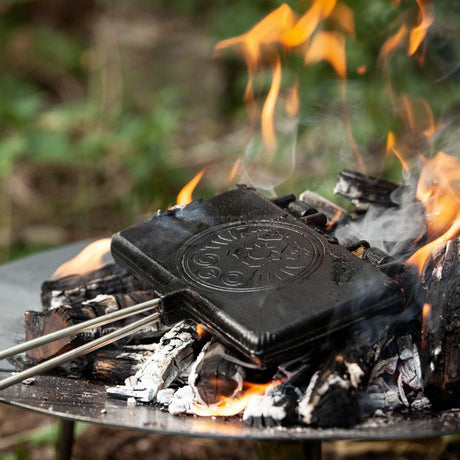When you're out and about, you rely on your tools. On what's in your hand when you're preparing firewood, building a shelter or shaping a piece of wood. A good bushcraft knife is not an accessory, but part of your equipment - robust, reliable, precise. It combines craftsmanship and nature in the most direct way: Steel meets wood, power meets control.
This guide is aimed at anyone who wants to do more outdoors than just enjoy the view. It shows what is important in a bushcraft knife, which features are important and how to find the right model for your next adventure.
Table of contents
What is a bushcraft knife?
What is important when buying
Bushcraft in practice - cutting, carving, splitting
The best bushcraft knives from Petromax at a glance
Care & sharpening - how to keep your knife ready for use
Conclusion: The right bushcraft knife to get you started
What is a bushcraft knife?
Bushcraft stands for the original life in nature - for self-reliance, craftsmanship and the conscious use of what the environment offers.
A bushcraft knife is the central tool for this. It is as versatile as it is robust, designed for all work that lies between rough woodworking and fine precision work.
In contrast to a classic outdoor or hunting knife, which is often specialized for cutting or chopping, it is designed for precise and controlled work with wood: Splitting wood, carving chips, removing bark, preparing food or making a fire.
Bushcraft is not about survival, but about conscious, manual work with natural materials. A good knife replaces several tools at once - it is a saw, axe and file in one.
A good bushcraft knife is characterized by three things:
- Stability - because it has to withstand blows, pressure and lever movements.
- Sharpness and control - for precise work when carving or cutting.
- Ergonomics and balance - so that it is still comfortable to hold even after hours.
It's the tool you can rely on in any situation - whether you're preparing your camp or simply shaping a piece of wood to turn it into something useful.
Buying a bushcraft knife: What you should really look for when buying
Blade material - carbon steel for maximum robustness and sharpness
The choice of steel determines the service life, sharpness and maintenance requirements.
High-quality carbon steel such as 80CrV2, which is used in Petromax knives, is considered one of the best materials for bushcraft knives. Its composition provides an exceptional combination of hardness, toughness and elasticity - exactly what you need outdoors.
Carbon steel has the advantage that it allows a particularly fine edge. This remains sharp for a long time, but can also be easily resharpened if you work with a simple whetstone. It develops a slight patina over time - this is not a flaw, but a natural protective film that also protects the knife from corrosion.
The 80CrV2 steel is made in Germany and stands for precision, resilience and cutting pleasure - properties that are noticeable in every cut.
Grind & shape - precision in every movement
A knife is only as good as its grind.
Bushcraft knives almost always have a Scandi grind - a blade shape in which the cutting edge runs out at a flat angle. As a result, it lies evenly on the material and can be guided precisely without slipping.
The advantage: you have control over the cutting angle at all times. This is particularly important when carving feather sticks, making kindling or working with wood for shelters or tool handles.
The shape of the blade influences the intended use:
- A wider blade is suitable for chopping or debarking.
- A narrow, pointed blade is ideal for fine work, such as notching or peeling.
- The spine can be sharpened so that it strikes sparks with a fire steel - a plus point for anyone who is self-sufficient.
The Scandi grind is also easy to maintain: a few strokes on a flat whetstone are enough to bring the edge back into shape.
Handle & handling - comfort and safety
A bushcraft knife is a tool that you hold in your hand for hours on end. That is why the handle determines comfort, safety and control.
Petromax uses walnut wood - not only because it looks beautiful, but also because it is functionally convincing: easy to grip, robust, resistant to moisture and pleasantly warm in the hand.
The handle scales are fully bonded to the steel and additionally fixed with aluminum rivets. This prevents vibrations when hitting (for example when batoning) and ensures that the handle does not come loose - even with repeated, vigorous use.
A slight rounding at the transition to the blade and a slip guard at the front give you safety when applying pressure. The knives are so well-balanced in the hand that they hardly cause any fatigue even when used for long periods of time - a sign of good ergonomics and balance.
Using bushcraft knives correctly: Cutting, carving and splitting
Bushcraft thrives on practical use.
A knife is good when it feels as if it is part of your hand - when you don't have to think about how to use it, but simply work.
- Cutting: When cutting bark, paracord or leather, precision is key. A clean cut prevents fraying and saves material.
- Carving: When shaping wood, for example for tools, wooden spoons or feather sticks, control counts. The Scandi grind provides tangible feedback on the resistance of the material - you can literally feel when the cut is perfect.
- Splitting (batoning): This shows how much power is in the blade. By lightly hitting the back of the knife with a piece of wood, the knife is guided through a branch. The Petromax Nata knife, for example, is predestined for such work - stable, low-vibration and reliable.
Bushcraft is a matter of practice. With every movement you get to know your knife better - and develop a feel for how it reacts. This is precisely the moment when tool and hand become one.
The best bushcraft knives from Petromax at a glance
Petromax Nata knife - power meets control
The Petromax Nata knife is built for rough work. Its blade made of German carbon steel is forged in Finland - a combination of German material quality and Nordic forging skills.
It is the ideal tool for working your way through dense bushes, pruning branches or clearing shrubs. Thanks to its Scandi grind and robust construction with a fully bonded walnut handle, it is stable in the hand and absorbs blows without losing precision.
The Nata knife is not a delicate cutting tool, but a real working knife: powerful, direct and reliable. It is made for those who don't just watch, but create outdoors.
The supplied genuine leather pouch protects the blade and can be worn comfortably on the belt - so the knife is always at hand without being in the way.
👉 Discover Petromax Nata knives in the store
Petromax Bushcraft knife - precision for every outdoor experience
The Petromax Bushcraft Knife is the sensitive addition to the Nata - smaller, handier, more precise. It is the knife you take when you carve feather sticks, prepare tinder or process wood for the cooking area when making a fire.
The German 80CrV2 carbon steel blade is made in Finland and keeps its sharpness even after repeated chopping and cutting. The bonded walnut handle with aluminum rivets feels secure and natural in the hand - a tool made to be used, not to be spared.
Its strength lies in the combination of stability and feel: strong enough for hard work, fine enough for precision tasks. It stays protected in the genuine leather pouch until you need it - and is then ready to go without hesitation.
👉 View Petromax Bushcraft knives in the store
Maintaining and sharpening bushcraft knives: How to keep your blade durable
A good knife deserves attention. After each use, you should clean the blade with a cloth and dry it thoroughly. If you are out for a longer period of time, it is often sufficient to rub it briefly with a little oil - Ballistol or camellia oil are tried and tested classics.
The following applies to carbon steel: a light patina is not rust, but protection. It is caused by contact with moisture or acid and protects the blade from corrosion.
A whetstone (grit 1000-3000) is sufficient for sharpening. The Scandi grind makes re-sharpening particularly easy: you lay the blade flat and guide it evenly over the stone. No complicated angle, no additional tools.
If you look after your knife, you have a tool for life - and that is exactly the idea behind the Petromax knives.
Conclusion: The right bushcraft knife to get you started
Bushcraft is not a trend. It is an attitude - the joy of simplicity, of craftsmanship, of the moment when you create something with your own hands.
The knife is your most important tool.
With the Petromax Nata knife and the Petromax Bushcraft knife you get equipment that not only works, but inspires.
Made in Europe, with precision, experience and the knowledge that real adventures do not tolerate compromises.
Because outdoors, every detail counts - and every good adventure starts with a sharp cut.
